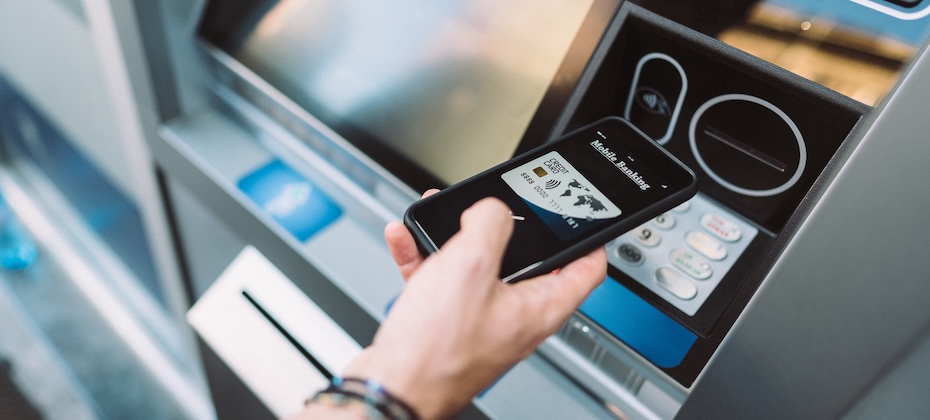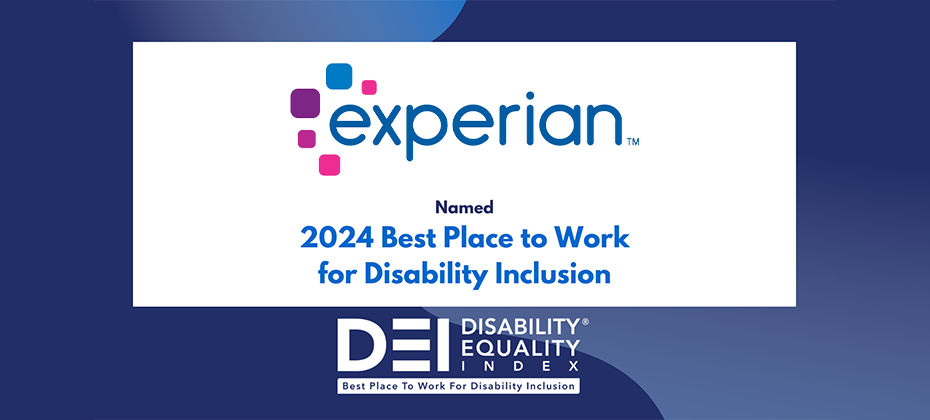At A Glance
At a Glance When an unknown printer took a galley of type and scrambled it to make a type 2ince the 1500s, when an unknown printer took a galley of type and scrambled it to make a type specimen book. It has survived not only five centuries, but also the leap into electronic typesetting, remaining essentially unchanged. It was popularised in the 1960s with the release ince the 1500s, when an unknown printer took a galley of type and scrambled it to make a type specimen book. It has survived not only five centuries, but also the leap into electronic typesetting, remaining essentially unchanged. It was popularised in the 1960s with the releaseince the 1500s, when an unknown printer took a galley of type and scrambled it to make a type specimen book. It has survived not only five centuries, but also the leap into electronic typesetting, remaining essentially unchanged. It was popularised in the 1960s with the releaseince the 1500s, when an unknown printer took a galley of type and scrambled it to make a type specimen book. It has survived not only five centuries, but also the leap into electronic typesetting, remaining essentially unchanged. It was popularised in the 1960s with the releaseince the 1500s, when an unknown printer took a galley of type and scrambled it to make a type specimen book. It has survived not only five centuries, but also the leap into electronic typesetting, remaining essentially unchanged. It was popularised in the 1960s with the release

Most people will tell you that they’re extremely proud when their hometown or current city accomplishes something. Hometown pride is why people are diehard fans for the local professional or college sports teams. Knowing that their city shines bright in any light, gives people a good feeling inside. With that said, people in the New York Metro area should have a strong sense of pride in how their businesses are performing. According to Experian’s Q2 Metro Business Pulse analysis, which looks at the top metropolitan areas in four key business credit categories, businesses in the New York area had the lowest average bankruptcy rates in the quarter, at just 0.28 percent. Those in the Nassau, NY; Baton Rouge, La; Honolulu; and Miami areas also have reason to be excited, as their businesses rounded out the top five with the lowest rates in this category. Another group of people who have reason to celebrate are those who live in the San Francisco area. Businesses there paid their bills an average of 3.2 days beyond contracted terms (DBT), more than 2.5 days less than the national average of 5.7 DBT. Businesses in the Omaha, Neb.; New York; Seattle; and Milwaukee metro areas also finished paying their bills faster than the national average. On the flipside, businesses in the Fort Myers, Fla. region took the longest to pay their bills, with businesses paying 18 days beyond contracted terms. The Orlando, Fla. Las Vegas; Miami; and Fort Lauderdale, Fla. metro areas rounded out the bottom five slow payers. The analysis also showed that all metro areas in the top five of business delinquency rates were well below the national average of 9.64 percent. Salt Lake City area businesses had the lowest business delinquency rates in Q2 at 0.92 percent, followed by Boise City, Idaho (1.62 percent); Houston (2.19 percent); San Diego (3.13 percent); and Tucson, Ariz. (3.17 percent). Conversely, businesses in the Miami metro area had the highest delinquency rate of 44.72 percent, followed by Fort Myers, Fla.; Orlando, Fla.; Cincinnati; and Fort Lauderdale, Fla. To view the full analysis, visit our Metro Business Pulse website. For more information on this report and other business-related insights, visit www.Experian.com/b2b.

An analysis of trends shows that mortgage originations have increased by 10 percent from a year ago. More important, a look at the most recent completed quarter shows a 29 percent increase in home purchases from the prior quarter and a decrease in the number of refinances, suggesting a sustained recovery is beginning to come from purchases. These findings and others were part of the quarterly analysis from Experian that examines real-estate trends. The key statistic in the real-estate market is the change in the ratios of refinances versus home purchases, with purchases making up a much greater proportion of the total origination volume. The data from Experian’s IntelliView product indicates that despite a 7 percent decrease from the previous quarter in refinancing activity, home purchases grew by 20 percent year over year and 29 percent quarter over quarter, and this is where we can begin to see some of the real-estate recovery taking place.” The analysis of existing and new home sales also points to the turnaround in the real-estate market. The data shows a reduction in sales of distressed homes and an increase in conventional sales. Since last year, the sales of distressed properties from short sales and foreclosures have been reduced from 25 percent to just 15 percent, while conventional existing home sales grew by 32 percent year over year, nearly double the overall growth rate of existing home sales. Combine this with strong growth year over year from new home sales at 38 percent, and it is easy to see that the recovery could be coming from purchases. Looking at the top metropolitan areas in terms of price appreciation and origination volume, Las Vegas, Nev.; Phoenix, Ariz.; and Atlanta, Ga., were three cities ranked in the top five for both categories. They were followed by Miami and Tampa, Fla., both in the top five for originations but not for prices, even though they had respectable double-digit price percentage increases. San Francisco and Los Angeles, Calif., also saw top-five price gains, but they were not in the top five for originations, despite their strong performance. This indicates that the areas showing the greatest recovery are those that were hardest hit during the downturn, such as Florida, Nevada, Arizona and California. Further evidence of the improving real-estate market is the significant jump in home-equity lines of credit (HELOC) in the second quarter of FY 2013 — the first major jump of this kind since the recession. Growing slowly but consistently since 2010, it increased about 10 percent last year but exploded this quarter with a more than 30 percent increase in the quarter and year over year. This data demonstrates an improved position for many consumers who now have equity in their homes due to market price increases. We continue to see a very conservative lending approach, with nearly 90 percent of HELOCs still coming from super-prime and prime consumers. However, there is an opportunity for more people to actually participate in getting a home-equity line because of home price improvements. This trend is likely to continue as we see more homeowners move into a better equity position. The West, Midwest, South Central, South Atlantic and Northeast regions of the United States all have shown strong year-over-year growth in HELOCs, with the West being the standout among the group. This is attributed to the price appreciation coming from cities like San Francisco, Los Angeles, Phoenix and Las Vegas. The Northeast also consistently leads in HELOCs nationwide regardless of how the real-estate market is performing in that area of the country. A look at mortgage delinquencies is the final piece of the data puzzle supporting a real-estate recovery. In this area, Experian® continues to see a downward trend across all the different time segments. The analysis showed that short-term delinquencies — 30 to 59 days past due (DPD) — dropped to 1.51 percent for the quarter and have been less than 2 percent for more than a year and a half. Midrange delinquencies — 60 to 89 DPD — saw a very slight 1 percent increase for the quarter, but they have been less than 1 percent for more than a year and a half as well. Long-term delinquencies — 90 to 180 DPD — were down 1.32 percent for the quarter. This impressive downward trend is the result of bad loans from the first real-estate bubble being removed and replaced with postrecession conservative lending. The data for this insight and analysis was provided by Experian’s IntelliViewSM product. IntelliView data is sourced from the information that supports the Experian–Oliver Wyman Market Intelligence Reports and is easily accessed through an intuitive, online graphical user interface, which enables financial professionals to extract key findings from the data and integrate them into their business strategies. This unique data asset does this by delivering market intelligence on consumer credit behavior within specific lending categories and geographic regions.

An Experian analysis of bankcard trends from Q2 2013 showed a 21 percent year-over-year increase in bankcard origination volumes, equating to $12 billion increase in new bankcard limits issued. Other insights offered by Experian, the leading global information services company, include record lows in early-stage bankcard delinquencies. Bankcard originations continue to track with the recovery in terms of steady growth. While we may never hit the volumes we saw in 2007, the consistent growth rates that we are currently seeing in bankcard originations signal that the market is coming back online. In looking at bankcard originations by VantageScore®, the year-over-year growth in originations has largely been driven by the prime and near-prime segments, comprising almost the entire $12 billion increase in new credit limit dollars originated. This trend points to the fact that prime and near-prime consumers are accepting the offers being extended to them and that lenders are continuing to lend a little deeper to drive bankcard growth. Equally important is that prime and near-prime bankcard utilization rates are not as high as they were a year ago. This is a positive trend, because it shows that despite an increase in new bankcard users, consumers are managing their credit wisely. The analysis of bankcard delinquency and overall risk exposure also continues to support the steady recovery of the bankcard market. Charge-off rates are significantly down, to an annualized rate of 3.9 percent, with early-stage delinquencies coming in at historic lows of 0.9 percent of balances for the quarter. Additionally, total risk exposure has dropped $3 billion from the previous quarter in 2013. These trends are a positive sign for overall economic recovery and evidence that the post-recession growth in the bankcard market is not coming at the expense of increased delinquencies. The data for this insight and analysis was provided by Experian's IntelliView (SM) product. IntelliView data is sourced from the information that supports the Experian-Oliver Wyman Market Intelligence Reports and is easily accessed through an intuitive, online graphical user interface, which enables financial professionals to extract key findings from the data and integrate them into their business strategies. This unique data asset does this by delivering market intelligence on consumer credit behavior within specific lending categories and geographic regions.

As you may have seen, 60 Minutes ran a story on the credit reporting industry tonight, and unfortunately, much of the story was inaccurate and misleading. As we said when it first aired, many parts of the story did not accurately reflect the facts that have been validated by independent third party studies, the industry’s position or Experian’s position. As such, we would like to clarify our industry position and specific allegations about Experian’s practices. >> Read More

This guest post is from Benjamin Feldman (@BWFeldman), writer and content strategist at ReadyForZero.com, a company helping people get out of debt. Is personal debt an impossible problem to fix? No way! Thousands – actually, millions – of people across the U.S. are struggling with personal debt right now, but the situation is not hopeless for any of them. I know, because just last year I was one of them. In January of last year, I had over $3,000 in credit card debt and a vowed to get it paid off before the year was over. I’m grateful that I was able to accomplish my goal and along the way I learned a few things that can help others who are still on their way to being debt free. If that includes you, keep reading to learn the 5 steps that will help you get out of debt: 1. See Your Big Picture For many people, one of the most intimidating parts of becoming debt free is actually coming to grips with how much you owe and figuring out your “big picture.” For example, if you have many different accounts (multiple credit cards and/or loans) you might not even know exactly how much you owe to each creditor and what the interest rates are on each one. So start by writing down each of your debts in order of the highest interest rate to lowest interest rate, along with the total balance for each debt. Be sure to include all debts (like student loans, car loans, mortgages, etc.) and list the entire balance and not just the monthly payment. Then you can move on to Step #2. 2. Get Lower Interest Rates This step is basically like super-charging your debt repayment. Why? Because you can save thousands of dollars if you get a lower interest rate. Some credit cards have rates as high as 25% – that is way too high! But if you followed Step #1, then you’ve got each of your accounts listed in front of you, and that makes it easy to identify the credit cards with the highest interest rates and attempt to get those lowered. Start by calling those credit card companies directly and when you get a customer service representative on the phone ask them politely if they can lower your rate. For anyone with a history of on-time payments, you can explain that you’ve been a loyal customer and always paid on time and that you would like them to reduce your interest rate. Many times this will work! If that doesn’t result in lower interest rates, another option is to see if there are any balance transfer offers or debt consolidation loans that would give you a lower rate. Just remember that some of these offers have hidden fees and interest charges, so be cautious and don’t sign up for one of these offers without reading the fine print first. (You can check out our Debt Consolidation resource center for more tips) 3. Make a Plan Alright, you’ve now completed Steps #1 and #2, which means it’s time to make a plan. This is not as hard as you might think. You simply need to decide how much you can pay each month toward all your debts. Then make sure the amount you can pay is greater than your minimum monthly payments (in other words, all your minimum payments combined should equal less than the total amount you can pay per month). What you’ll want to do next is allocate all your extra money each month to the account with the highest interest rate – because that will get you out of debt the fastest! If you have three credit cards and one has a 20% interest rate while the other two have a 10% interest rate, just pay the minimum on the other two while you dedicate all extra money toward the 20% card. And don’t worry, if you need help creating your plan, you can try using ReadyForZero’s free online tool for paying off debt. 4. Learn to Budget Wisely The next step is to examine your budget closely and see where you can save a little more money to add to your debt repayment. The most important part is to track your spending so you can see where each dollar goes. And look closely to find the things that you don’t really need to spend money on. Things like eating out at restaurants, buying new clothes, or buying music online. When you have debt, it’s an emergency – and that means you can’t afford those kinds of luxuries except on rare occasions. Another way to approach your budget is to look at all your fixed expenses (the things you pay every month) and try to figure out how they can be cut or eliminated. Check out these budgeting tips on how to reduce your fixed expenses, and in no time you’ll find yourself with additional flexibility in your budget. You can also read our blog post on how to make extra money from home, which can boost your income and make monthly budgeting easier. 5. Stay Motivated for the Long-Run The last step is the one that brings it all together. You cannot accomplish any goal without motivation, and getting out of debt is no different. You’ll need to cultivate motivation in order to stay focused and keep pushing forward! One of the best ways to do this is to confide in your friends and family and tell them about your goal of being debt free. Ask them to support you and encourage you, so that when things get hard you’ll think of them and that alone will be enough to help you keep going. If you’re excited and want more get-out-of-debt tips, or if you have further questions, check out our comprehensive guide on how to get out of debt. And no matter what, keep your head high and keep making those monthly payments! You will be debt free faster than you imagine. Photo: Shutterstock

You’re sitting at home thinking about opening up a new business…maybe you’re just planning on relocating an existing office…or maybe you’re looking to do business with a new vendor. Whatever the situation may be, you have to ask the question, which cities are primed for new business opportunity? Where are businesses performing at a high level? Are businesses in City A paying their bills faster than City B? To help answer those questions and more, Experian released its new quarterly Metro Business Pulse analysis on the top metropolitan areas based on business credit data. The analysis focuses on the top 25th percentile of metropolitan areas based on the number of businesses in major industry groups, and looks at four leading indicators of business health including risk score, days beyond term (DBT), delinquency and bankruptcy. • Risk Score — We used our proprietary commercial risk score, which is based on a scale of 1 to 100 (with 100 being least risky) and predicts the likelihood of severe delinquency (more than 91 days past due) within the next 12 months • Days Beyond Terms — The weighted average number of days that businesses paid their bills beyond the contracted terms. • Delinquency — The average percentage of dollars that are considered delinquent or past due. • Bankruptcy — The average rate of businesses filing for legal protection under Chapters 7, 11, 13 or 15 of the bankruptcy code. According to the Q1 2013 analysis, Omaha, NE tops the list of DBT, paying their bills the fastest, with businesses in that area paying an average of 4.75 days beyond contracted terms, followed by San Francisco, Rochester, NY, Salt Lake City and Milwaukee to round out the top five. On the flip side, Florida metro areas are taking considerably longer to pay, having made up four of the bottom five in this category with Miami businesses being the slowest to pay. However, all is not bleak in Miami, as businesses in that area had the fifth lowest bankruptcy rate at 0.43 percent. Businesses in New York City topped the list with the lowest bankruptcy rate in Q1, followed by Nassau-Suffolk, NY, Baton Rouge, LA and Honolulu to make up the remaining top five. To view the full analysis, check out our Metro Business Pulse website. For more information on this report and other business-related insights, visit Experian.com/b2b.

The past several years have been somewhat of an uphill climb for our country’s economy and this has impacted the default rates for consumer credit. However, now that we’re out of the recession, consumers are managing their credit back to pre-recession levels. In June 2013, the S&P/Experian Consumer Credit Default Indices, a monthly comprehensive measure of changes in consumer credit defaults, showed that default rates have fallen at a national level, as well as, in all four major buckets it tracks including, bankcard, auto, first mortgage and second mortgage. Additionally, the national composite and first mortgage defaults rates hit new post-recession lows at 1.34 percent and 1.23 percent, respectively. Also, two of the five cities the indices focus on, New York and Miami, both saw decreases in default rates during the month. The other three cities, Chicago, Dallas and Los Angeles all saw marginal increases in June. However, all five cities remain below their levels a year ago. To view the full press release, visit http://bit.ly/14WuRzx.

A recent study conducted by the Governing Institute and commissioned by Experian confirms that government benefit agencies can greatly improve their eligibility verification processes through automated data analytics. Historically, assorted health and human service programs have been compartmentalized, with each benefit agency having its own data collection system, eligibility requirements and program rules. The technology to streamline processing by allowing one agency to match its data against other content repositories, though available, has not been in place. The result has been frequent re-entry of information causing processing delays, slowing response time and increasing manual labor costs. These shortcomings have limited agencies’ ability to detect and combat fraud. The Governing Institute survey of 150 state and local government leaders shows several areas of concern for benefit agencies. Notably, those surveyed cited a need to validate applicant information and the desire for reliable fraud detection and prevention tools. Nearly 70 percent of respondents cited the need for improved accuracy of their eligibility decision-making, and almost 60 percent of respondents believed that false income reporting was seen as the greatest cause of fraud. The study also found that while only 70 percent of benefit agencies report currently verifying information, even fewer re-verify an applicant once they are in the system. Yet, 88 percent of respondents described eligibility verification as either “very important” or “one of the most important” issues they face. And more than half the government officials responding (53 percent) believe that the issue of eligibility fraud will increase in importance to their agency over the next two years. The Governing Institute survey highlights the fact that benefit-eligibility verification is still in its early adoption stage. “A number of technology controls can help improve the fraud situation,” the analysts found. “These include fraud detection and monitoring.” However, a mere 26 percent of respondents are currently taking advantage of these types of systems. The research points out the many obstacles agencies face when attempting to combat abuse. In addition to insufficient resources (budget and personnel), respondents cited difficulty integrating data from multiple sources and inadequate fraud-detection tools as the greatest hurdles to preventing eligibility fraud. According to the survey, 67 percent of respondents said they were either concerned or very concerned about fraud affecting their organizations and the programs they steward. Check out the results of the eligibility verification study and learn more about Experian’s Eligibility Assurance Framework solution.

Experian Consumer Services (ECS) was recognized as the winner of the "Best in Class Call Center" category at the industry-leading Call Center Excellence Awards at the recent Call Center Week's Awards Luncheon. The winners were announced by CustomerManagementIQ.com, a division of the International Quality & Productivity Center (IQPC), in front of 1,200 customer service executives at the 14th Annual Call Center Week, the largest, most comprehensive call center event in the world. The Experian Consumer Services call center is comprised of hundreds of employees who deliver a personalized experience assisting customers with credit- and identity theft-related issues. The center is built on the philosophy of E3: Exceptional Experiences Every time, which allows the team to retain internal and external customers, attract large partners and drive continuous improvement at every touch-point. E3 is woven through everything Experian Consumer Services does, including hiring, training, policies, procedures, corrective action, recognition and rewards. ECS understands that loyal and happy employees make loyal and happy customers. Its vision for all of its contact centers is to continue to be a great place to work and the employer of choice in its communities. The ECS approach to call center strategy is not necessarily proof that “Culture trumps Strategy,” rather it’s the understanding that culture and strategy are interrelated. Treat your people right, engage them, educate them and they will in turn perform their best for the company and do what is right for the customer. "We would like to thank the International Quality & Productivity Center for this award and recognition of our team's commitment to providing the best possible service to our customers," said Doug Sash, senior vice president of customer engagement for Experian Consumer Services. "Our customer care representatives use their knowledge and skills to create an exceptional and valuable experience for each member who calls."
![5 Tips to Avoid a Financial “Burn” On Your Summer Getaway [Infographic]](https://stg1.experian.com/blogs/news/wp-content/uploads/default-post-image.png)
Summer officially arrives on June 21. The busiest travel season of the year is on the horizon, and freecreditscore.com™ wants to help travelers mitigate post-vacation credit debt that can impact their credit long after a vacation ends. Here are five tips to avoid the pitfalls of a post-vacation credit sunburn: Save early. Each month, put away a small amount toward a vacation to avoid charging all travel expenses on a credit card. Charging all travel expenses to a credit card can take a long time to pay off, accruing interest and raising your credit utilization ratio (which isn't good for your credit score). Know credit card payment dates. Missing payments hurts your credit score. Traveling when a credit card payment is due? Set up a payment ahead of time using mobile banking. That way, even when lounging on the beach, you can rest assured that your credit card payment is made on time. Paying off credit card balances on time will help you establish a good payment history. Select a card with travel benefits. Planning to do a lot of traveling? Do some research and consider switching to a credit card that offers better travel-related rewards that can save money on airfare, hotels and car rentals. Don't run up a credit balance just for points, however; that could raise your credit utilization ratio. Go old school. Bring traveler's checks. Use traveler's checks to avoid relying on a credit card when vacationing abroad – and to protect against credit card theft. They're replaceable, convenient and won't impact your credit report if stolen. Check your credit before and after travel. Approach credit proactively. Check your credit report before and after a trip. If your identity has been compromised while you were traveling, the sooner suspicious or fraudulent activity is detected, the sooner you can take action to resolve the problem. Staying on top of your credit score as part of overall credit understanding is important. freecreditscore.com provides quick, easy and inexpensive access to personal credit scores, daily credit report monitoring, alerts to key changes and educational materials. It also features its innovative Score Planner, which is free to both members and nonmembers. To learn more about creditworthiness, visit freecreditscore.com.

Further evidence of economic recovery throughout the nation, an Experian trends analysis of new mortgages and bankcards from Q1 2013 showed a 16 percent year-over-year increase in mortgage origination volume and a 20 percent increase in bankcard limits. Other insights offered by Experian, include evidence of a strong rebound in the Midwest as well as unprecedented lows in bankcard delinquencies. Mortgage trends Mortgage origination volume saw a 16 percent increase over the same quarter a year ago. This upward trend in volumes over the past eight quarters points to a consistently improving housing market. Average home prices increased slightly from 2011. California continues to lead the way, with an average home price of $325,000. The South Central region increased to $169,000, surpassing the Midwest, which came in at $163,000. However, regional share of originated mortgage dollars showed strong activity in the Midwest as the new year began, with the Midwest rebounding by growing 27 percent year over year to $101 billion. For the first time in two years, the region surpassed California, which grew by 6 percent to $92 billion. Mortgage delinquency rates also continued to improve, reaching multiyear lows. There was a slight increase in late-stage 90- to 180-day delinquency that may be the result of continued stress in some specific housing markets. Bankcard trends Bankcard lending continues to slowly build every quarter, reaching a 20 percent year-over-year increase in total origination volume limits extended into the market during Q1 2013, which is up about $11 billion. According to the analysis Experian is seeing increased bankcard lending taking place in the prime and super-prime space. Significant year-over-year growth rates occurred within the near-prime segment, which saw a 42 percent increase, while the prime space grew 30 percent. Bankcard performance is also near record lows for each of the delinquency periods. Experian saw a slight seasonal uptick in charge-offs from 3.9 percent to 4.3 percent, but other than that, it was another very strong quarter for payment performance. The 30 to 59 days past due (DPD) went to 0.94 percent — six basis points lower than the previous quarter. Also, the 60 to 89 DPD went to 0.59 percent from 0.65 percent, and the 90 to 180 DPD was flat at 1.56 percent. In looking at the 30-plus-day delinquency rate by state for the quarter, Experian saw North Dakota lead the best-performing states, with the lowest rate of 1.94 percent. This was followed by Alaska at 2.23 percent, Wyoming at 2.34 percent, South Dakota at 2.41 percent and Iowa at 2.42 percent. The states that did not perform well for the quarter were Nevada at 3.81 percent, Arizona at 3.79 percent, Florida at 3.71 percent, Mississippi at 3.51 percent and Alabama at 3.40 percent. This information shows that the spread between the highest- and lowest-performing states for bankcards is continuing to close. The data for this insight and analysis was provided by Experian’s IntelliViewSM product. IntelliView data is sourced from the information that supports the Experian–Oliver Wyman Market Intelligence Reports and is easily accessed through an intuitive, online graphical user interface, which enables financial professionals to extract key findings from the data and integrate them into their business strategies. This unique data asset does this by delivering market intelligence on consumer credit behavior within specific lending categories and geographic regions.

Experian has provided World Omni Financial Corp. (World Omni) with a flexible decision management solution based on its PowerCurve™ and Attribute Toolbox™ software that will streamline the processing and decisioning of automotive finance applications. “We needed a decision management solution, and Experian could deliver cost-effective, robust technology that quickly and seamlessly integrated with our loan origination system. This tool will enable us to grow our automotive finance business,” said Bill Shope, vice president of Portfolio Management at World Omni Financial Corp. “The solution also needed to be flexible enough to provide us with long-term support and growth capabilities as customer needs and market dynamics change.” As part of the solution, Experian’s PowerCurve Strategy Management software will enable World Omni to quickly design, test, execute and continuously improve decision strategies. Experian’s Attribute Toolbox will allow World Omni to tap into the wealth of credit and noncredit data available in today’s market. It also contains Experian’s Premier Attributes, the credit industry’s most robust and predictive tri-bureau credit attributes, and Custom Attributes, which enable users to make risk decisions within their application processing system that are specific to their financing processes. “Organizations like World Omni are constantly trying to better understand consumers, analyze areas for risk and look for new growth opportunities,” said Charles Chung, president of Decision Analytics North America at Experian. “This requires empowering business users, without overburdening IT, to make and monitor decisions that result in both loyal customers and improved profits. To accomplish this, they need the power of today’s best decision management software and the intelligence of advanced analytics that will provide them with more agility, flexibility, control and insight into every lending decision.” Experian provides software, analytics and services in a number of ways to meet individual client needs. The World Omni solution has been implemented in a secure, hosted environment within the Experian firewall at one of its state-of-the-art data centers. World Omni also will utilize Experian’s Precise IDSM product for verification and fraud detection. These services are integrated with Experian’s PowerCurve Strategy Management and Attribute Toolbox.











